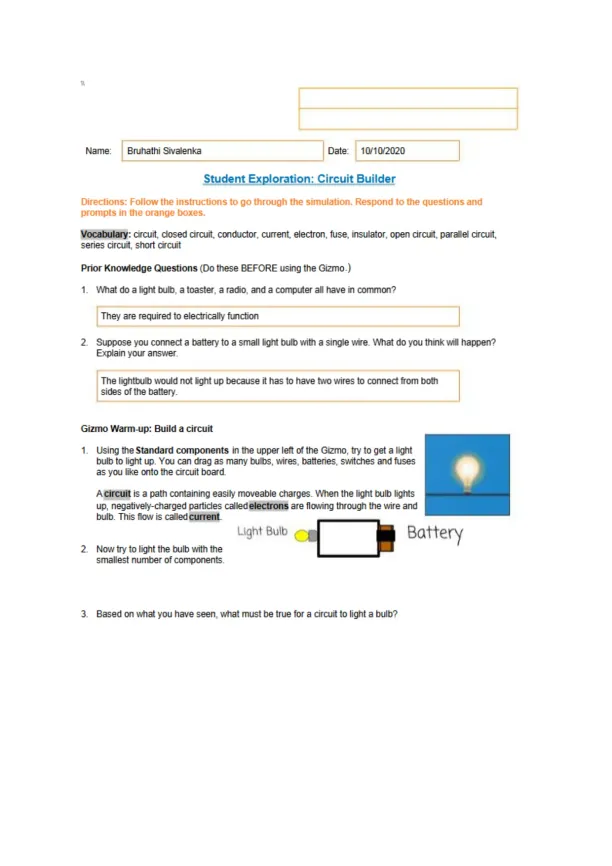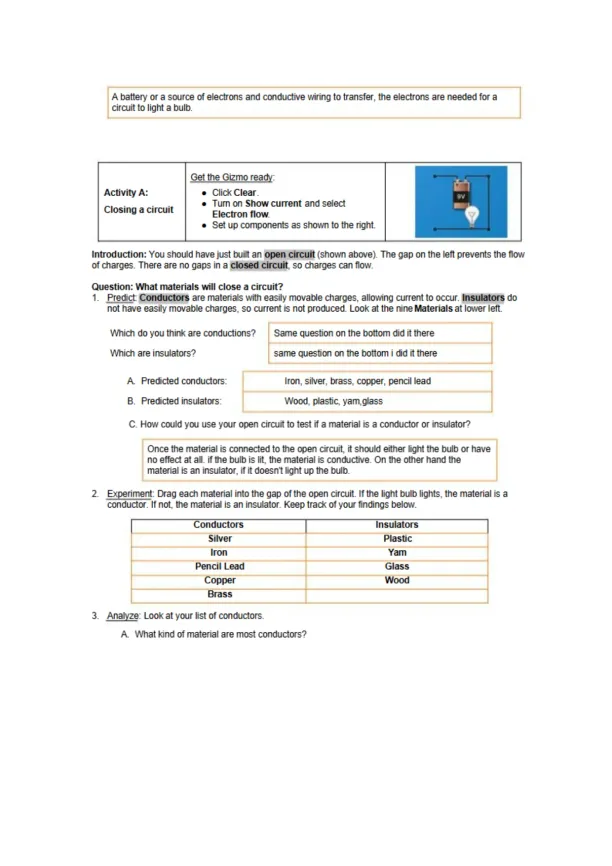Page 1

Loading page image...
Page 2

Loading page image...
This activity guides students through a circuit simulation, prompting exploration of key concepts like current, open/closed circuits, and components. Students make predictions and observations to build foundational understanding of electricity.
Loading page image...
Loading page image...
This document has 6 pages. Sign in to access the full document!